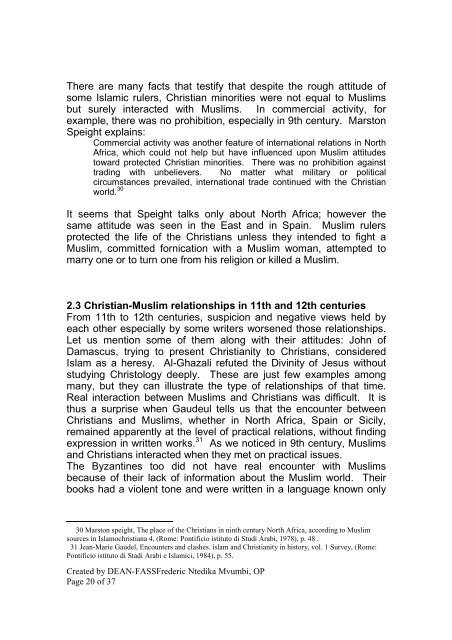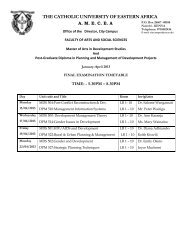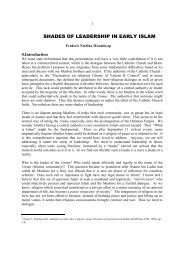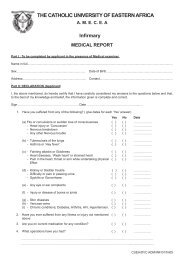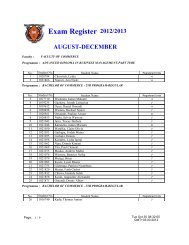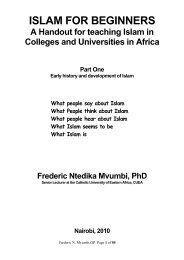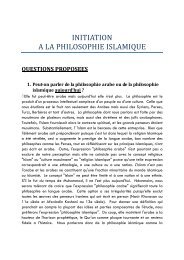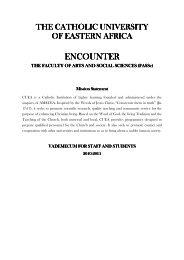PRINCIPLES FOR INTERRELIGIOUS DIALOGUE.pdf - CUEA
PRINCIPLES FOR INTERRELIGIOUS DIALOGUE.pdf - CUEA
PRINCIPLES FOR INTERRELIGIOUS DIALOGUE.pdf - CUEA
You also want an ePaper? Increase the reach of your titles
YUMPU automatically turns print PDFs into web optimized ePapers that Google loves.
There are many facts that testify that despite the rough attitude of<br />
some Islamic rulers, Christian minorities were not equal to Muslims<br />
but surely interacted with Muslims. In commercial activity, for<br />
example, there was no prohibition, especially in 9th century. Marston<br />
Speight explains:<br />
Commercial activity was another feature of international relations in North<br />
Africa, which could not help but have influenced upon Muslim attitudes<br />
toward protected Christian minorities. There was no prohibition against<br />
trading with unbelievers. No matter what military or political<br />
circumstances prevailed, international trade continued with the Christian<br />
world. 30<br />
It seems that Speight talks only about North Africa; however the<br />
same attitude was seen in the East and in Spain. Muslim rulers<br />
protected the life of the Christians unless they intended to fight a<br />
Muslim, committed fornication with a Muslim woman, attempted to<br />
marry one or to turn one from his religion or killed a Muslim.<br />
2.3 Christian-Muslim relationships in 11th and 12th centuries<br />
From 11th to 12th centuries, suspicion and negative views held by<br />
each other especially by some writers worsened those relationships.<br />
Let us mention some of them along with their attitudes: John of<br />
Damascus, trying to present Christianity to Christians, considered<br />
Islam as a heresy. Al-Ghazali refuted the Divinity of Jesus without<br />
studying Christology deeply. These are just few examples among<br />
many, but they can illustrate the type of relationships of that time.<br />
Real interaction between Muslims and Christians was difficult. It is<br />
thus a surprise when Gaudeul tells us that the encounter between<br />
Christians and Muslims, whether in North Africa, Spain or Sicily,<br />
remained apparently at the level of practical relations, without finding<br />
expression in written works. 31 As we noticed in 9th century, Muslims<br />
and Christians interacted when they met on practical issues.<br />
The Byzantines too did not have real encounter with Muslims<br />
because of their lack of information about the Muslim world. Their<br />
books had a violent tone and were written in a language known only<br />
30 Marston speight, The place of the Christians in ninth century North Africa, according to Muslim<br />
sources in Islamochristiana 4, (Rome: Pontificio istituto di Studi Arabi, 1978), p. 48 .<br />
31 Jean-Marie Gaudel, Encounters and clashes. islam and Christianity in history, vol. 1 Survey, (Rome:<br />
Pontificio istituto di Stadi Arabi e Islamici, 1984), p. 55.<br />
Created by DEAN-FASSFrederic Ntedika Mvumbi, OP<br />
Page 20 of 37


